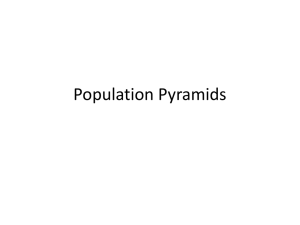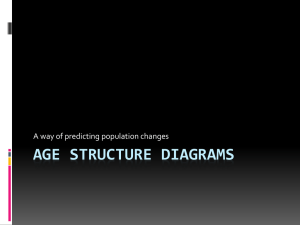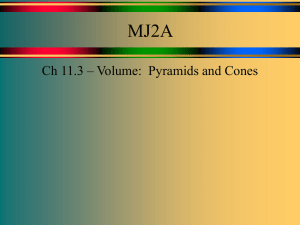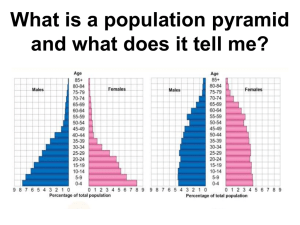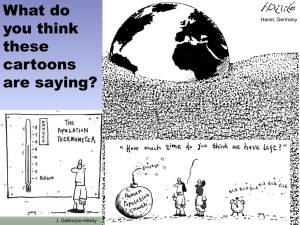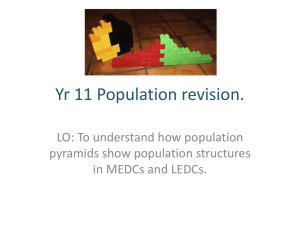Section 2.4 Three Dimensional Shapes
advertisement
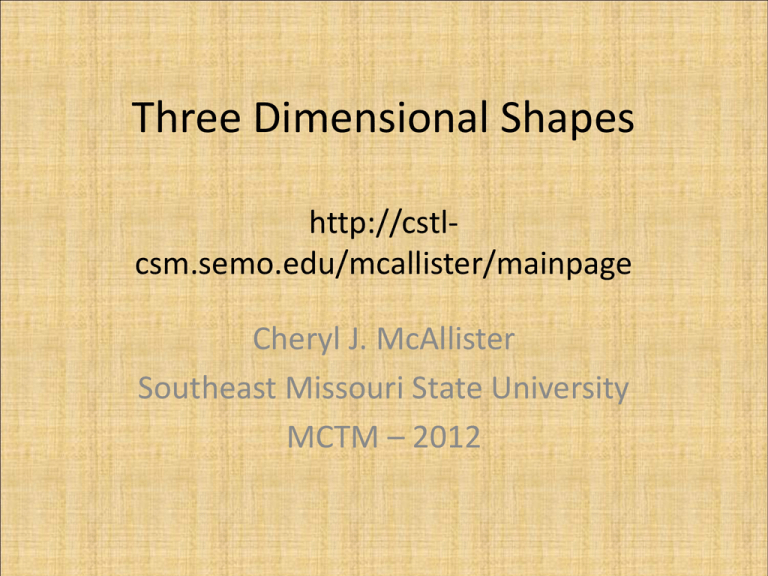
Three Dimensional Shapes http://cstlcsm.semo.edu/mcallister/mainpage Cheryl J. McAllister Southeast Missouri State University MCTM – 2012 While I am talking… • Select a color(s) of construction paper you like • Select a circle making tool of your choice • Draw circles with at least a 1 inch radius, but no more than a 2 in radius. • You will need at least 4 circles, but 8 will be the best. • You may have to take turns with the tools. Geometry Standard for Grades Pre-K-2 Instructional programs from prekindergarten through grade 12 should enable all students to— In prekindergarten through grade 2 all students should— •recognize, name, build, draw, compare, and sort two- and three-dimensional Analyze characteristics and properties of shapes; two- and three-dimensional geometric •describe attributes and parts of two- and shapes and develop mathematical three-dimensional shapes; arguments about geometric relationships •investigate and predict the results of putting together and taking apart two- and three-dimensional shapes. http://www.nctm.org/standards/content.aspx?id=26846 Geometry Standard for Grades 3-5 Instructional programs from prekindergarten through grade 12 should enable all students to— In grades 3–5 all students should— Analyze characteristics and properties of two- and three-dimensional geometric shapes and develop mathematical arguments about geometric relationships •identify, compare, and analyze attributes of two- and three-dimensional shapes and develop vocabulary to describe the attributes; •classify two- and three-dimensional shapes according to their properties and develop definitions of classes of shapes such as triangles and pyramids; http://www.nctm.org/standards/content.aspx?id=26814 Geometry Standard for Grades 6-8 • Instructional programs from prekindergarten through grade 12 should enable all students to— • Analyze characteristics and properties of two- and threedimensional geometric shapes and develop mathematical arguments about geometric relationships • Expectations: In grades 6–8 all students should— • precisely describe, classify, and understand relationships among types of two- and three-dimensional objects using their defining properties; • understand relationships among the angles, side lengths, perimeters, areas, and volumes of similar objects; The activity today is one of many, many ways to get students thinking about and exploring 3-D figures • Can be used to review vocabulary • Can teach students to use construction tools such as compass and straight edge • Can be used to teach some math history • Can be used as an art activity to decorate the classroom Polyhedron (polyhedra) • A three dimensional figure composed of polygonal regions (called faces) joined at the sides (edges). The point where edges meet is called a vertex. Polyhedra are often categorized by their shapes • Prisms – composed of two bases (which are congruent polygons), joined by parallelograms (called lateral faces). • Pyramids – composed of 1 polygonal base and lateral faces that are triangles that meet at a single point called the apex. Prisms Other info about prisms • Prisms are often named for the shape of the bases IF the lateral faces are rectangles, then we have a right prism. IF the lateral faces are not rectangles, then we have an oblique prism. • The height (or altitude) of a prism is the perpendicular distance between the bases. Triangluar Pyramid More info about pyramids • Pyramids are often named by the shape of the base. • The height of a pyramid is the perpendicular distance from the apex to the base. • The slant height of a pyramid is the distance from the apex along a lateral face of the pyramid, perpendicular to the opposite edge of the face. (see next slide) Height and slant height h = height s = slant height More facts about pyramids • IF the apex is over the center of the base, then the pyramid is a right pyramid, if not, then the pyramid is oblique. • IF the base of the pyramid is a regular polygon, then the pyramid is said to be a regular pyramid. Height of a right pyramid Right Height of an oblique pyramid Note: the height is outside the pyramid Regular polyhedra (Platonic solids) Tetrahedron Hexahedron Dodecahedron Octahedron Icosahedron Extensions of this lesson • There are only 5 possible regular polyhedra. Can you explain why? • Investigate Euler’s Formula F+V=E+2 Where to find directions • http://www.auntannie.com/Geometric/PlatonicSolids/ Another method - Folding nets • This is what a tetrahedron looks like if you flatten it out. Thank you! cjmcallister@semo.edu http://cstlcsm.semo.edu/mcallister/mainpage
